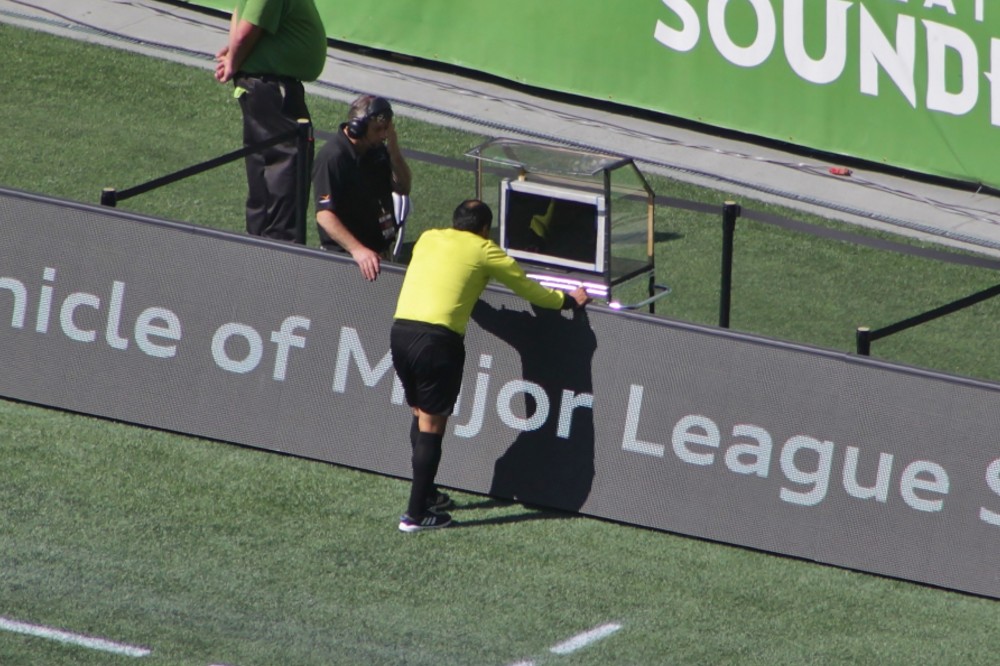Not a day goes by where you won’t see an article in the papers criticising the decision of VAR. No matter what sport you’re into, they all seem to have been invaded by video assistant referees, and there’s a lot of arguments surrounding whether the system is always accurate – just ask Manchester United and Chelsea fans. Darren Watkins, managing director of Virtus Data Centres, explains what goes on behind the scenes and why VAR is so challenging.
Digital transformation now affects every part of our lives. From medicine to transport, to the way we work, technology is transforming the way we live – and the sporting world is no different. Following in the footsteps of Hawk-Eye in cricket and Television Match Official (TMO) in rugby, VAR or Video Assistant Referee is making waves in English Football.
With high-profile refereeing errors shaping the direction of matches and tournaments (remember the disallowed Frank Lampard goal in the England-Germany World Cup clash anyone?) it’s perhaps unsurprising there is an appetite for technology in football. Sadly, controversy has stolen the headlines continuously since the season’s start, with inconsistent decisions – and the time it takes to make them – sparking fury and frustration amongst managers, players and supporters.
How does VAR work?
The way VAR works is that all cameras in a stadium – usually between 12 and 15 – transmit a feed back to the Video Operations Room in Stockley Park, Uxbridge. The VAR will signal to the referee when it should be used, usually within 30 and 40 seconds – the time it normally takes to restart after a goal is scored. To ensure the game isn’t stalled as a review goes on, the VAR only has until the next time the ball goes out of play to signal to the referee.
The VAR cannot make decisions during a game. Instead, it supports the referee in the stadium by providing real-time video analysis including some advanced 3D modelling software that can specifically check if a player is offside. The system is only called upon when a referee has missed something that is demonstrably a black or white decision – ‘if it’s not clear and obvious, leave it’ and ‘minimum interference, maximum benefit’ are the rules of engagement.
The criticism
Several months into the footballing season and it’s fair to say that sports news has been dominated by headlines bemoaning VAR decisions. While it’s accepted that technology reduces errors, which is of vital importance in today’s big-money sporting contests, it also means a goal can be scored, celebrated, then disallowed, diminishing the delight of players and supporters.
“The human element of the game is a critical component of it,” said the executive of the Welsh Football Association, in a report by The Guardian.
“It’s the thing ultimately we end up debating. That’s the beauty of the game and it’s what keeps people talking in the pubs afterwards. I was worried you would end up with a stop-start situation where you review all decisions and I don’t see that as part of the game.”
Furthermore, there is a fundamental lack of clarity. Fans in grounds on match day have been left bewildered as to what VAR is actually checking, what the delay is about, and why decisions have been made.
Accepting human error is still an issue
Some point to failures in the technology. In cricket, many pundits have questioned the accuracy of the Hawk-Eye system which is based on principles of triangulation via visual images and data transmitted by video cameras placed at various locations and angles around the area of play. For example, in a quarter-finals match at the Indian Wells Masters 2009, Hawk-Eye mistakenly captured the second bounce of the ball instead of the first, resulting in the wrong judgment of the gameplay which was eventually overruled by the human judge.
But the technology challenges simply don’t exist in VAR. The technology is ultra-reliable – no matter where a Premier League game is being played, VAR is always based in Stockley Park – and, due to the data centre infrastructure and connectivity, there have been no issues with latency between the stadium in which the match is being played, and the VAR studio – with communications instant and video replays being available to the extra officials in real-time.
If the problem isn’t the technology, why are we still distrustful of the system? The answer is ultimately in human error. It’s ironic perhaps that technology designed to eliminate the costs of human error in the game, to do away with players and coaches furiously protesting poor decisions, would ultimately be negatively affected by human error. But, when a system is created, implemented and overseen by humans, mistakes are never far away. Humans set the guidelines for the use of VAR and human officials dictate how and when it’s used during matches.
Perhaps the lack of clarification on who has the final decision on in-play incidents is the main reason for the delays? Do the on-field referees have absolute authority or do the VAR officials have the ability to overrule the original decision? It seems fans, pundits and indeed sometimes the officials themselves are not entirely clear.
VAR certainly promises more accuracy, fairer decisions and less injustice in the game, but there’s some way to go before people using the systems can keep up with the technology itself. This isn’t an issue that’s specific to sport – from advances in mobile to virtual reality and augmented reality, to workplace systems, the technology is often available for some time before people work out how best to use it.
With the right guidelines and rules in place, technology-assisted sports can provide a better experience for both the game officials and players who will feel assured knowing they have the technology to assist in gameplay.





